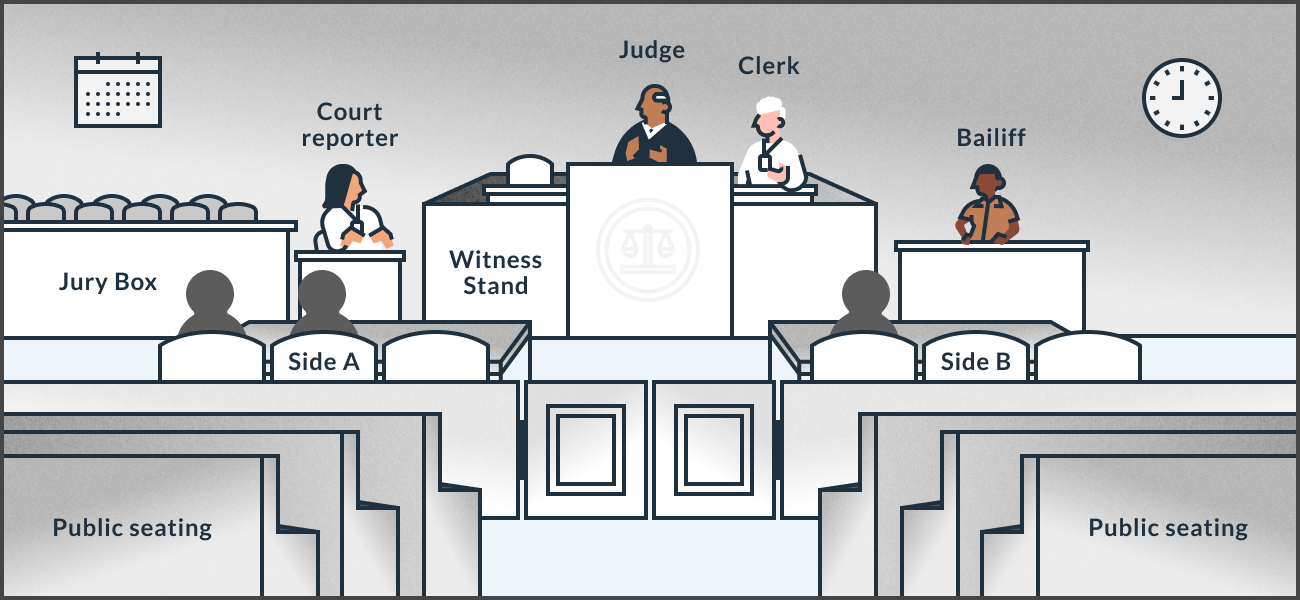💻 Get more tips if you have a remote hearing (by computer or phone).
Before you go
Know where you’re going and how long it will take to get there
You could miss your turn if you’re late. If the court thinks you aren’t coming, the judge may decide without you.
-
Make plans to arrive early.
-
Think about traffic and where to park or figure out how to get there on public transportation.
-
Write down the phone number of the courtroom clerk. In case of an emergency, you can call and tell the clerk that you may be late.
Your court’s website may have information about where to park and whether you’ll need money to park.
If you can, try to go to the courtroom where your hearing (or trial) will be held the week before. You can watch how the hearing goes, see what the judge is like. Then you'll know how to get there, where to find the courtroom, and you'll feel more calm on your court date.
If you’re going to be late or will miss your court date:
-
Call the court. Leave a message for the clerk who works in the courtroom (or department) where your hearing is to take place.
-
Call the other side to let them know. If it’s an attorney, call their office.
Dress nicely
Dress like you’re going to a job interview. No shorts, baseball hats, or flip flops.
Find childcare
Court may take all morning or afternoon, even all day, so you'll need to find someone to care for your children for the day.
Some courts have a Children’s Waiting Room, a safe place for children to wait while parents conduct court business. You can check with your court in advance to see if this is available.
Gather what you need
Bring a pen and paper, plus a folder with copies of:
-
Your court papers
-
Papers the other side filed (if any)
-
Three sets of anything you want the judge to review. One for you, one for the judge, and one for the other side.
-
Notes with what you plan to say or ask
If you plan to show evidence (like a document or photograph), the court may have specific requirements for how you organize and present these. Be sure you've reviewed information about how to prepare for your specific type of hearing or trial so you'll know what's expected.
In the courtroom
What to expect
There may be several hearings on a single day in the courtroom. You can wait for your turn in the public waiting area at the back of the courtroom.
When it's your turn, you'll take a seat at a table at the front of the courtroom. Typically, the person who started the case (the petitioner or the plaintiff) will sit on the right side. The person responding to the case (the respondent or the defendant) will sit on the left. But not every court follows this rule.

Follow courtroom rules
Rules are usually posted outside the courtroom, but here are some common, basic rules:
-
Do not bring food or drinks
-
Turn off or silence your cell phone
-
Do not wear a hat or any sunglasses on your head
-
Don't interrupt the other side. Wait until it's your turn to speak and let the judge know you want to respond.
When speaking to the judge:
-
Refer to the judge as “your honor” or Judge
-
Don’t interrupt the judge
-
Stop talking if the judge interrupts you

